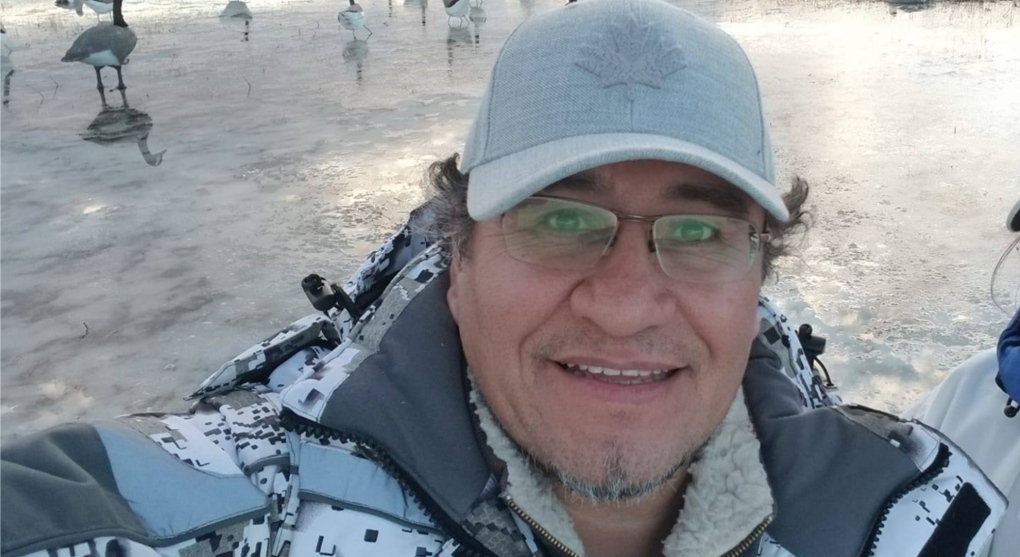What we know so far about accused murderer Joseph George Sutherland
Nearly 40 years after Joseph George Sutherland allegedly killed two women in Toronto, the now 61-year-old has been arrested.
Toronto police announced Monday they linked Sutherland’s DNA to the deaths of Erin Gilmour and Susan Tice, who were killed inside their respective homes in downtown Toronto in 1983.
Police said the person allegedly responsible remained on the loose for nearly 40 years, until last Thursday when Sutherland was taken into custody by the Ontario Provincial Police.
The charges have not been proven in court.
Here’s what we know about Sutherland so far.
Sutherland was living in Toronto at the time of the murders, but police did not say if Sutherland had a connection with his alleged victims.
Police said he was not a suspect, or person of interest, at the time of the murders. He was never questioned by police while he was living in Toronto.
 An image of Joseph George Sutherland. (Facebook/Joseph G. Sutherland)
An image of Joseph George Sutherland. (Facebook/Joseph G. Sutherland)
At the time of his arrest, Sutherland was living in Moosonee, Ont. Moosonee is a small northern town nearby James Bay, which is the southernmost tip of Hudson Bay, and is roughly 850 kilometres north of Toronto.
Det. Sgt. Stephen Smith, the lead investigator on the case, said Monday morning Sutherland moved throughout the province during the last 39 years, but did not specify where else he lived.
Smith said there were “no issues” taking Sutherland into custody, adding “when you commit these crimes, you're just waiting for that knock to come at the door.”
Smith confirmed Sutherland does have a family and an extended family – who are all living in northern Ontario as well – but he would not provide details as to who exactly they are.
Sutherland was arrested after police said they used genetic genealogy technology from U.S.-based company Othram Inc., a private lab who said it “helps investigators break through previously impenetrable forensic DNA barriers and close previously unsolvable cases.”
“It’s a snip test – a single nucleotide polymorphism – so that allows us to use the genes between the genes to have familial connectivity, and we’re able to use that to utilize people that have uploaded their DNA to Family Tree DNA,” Smith said.
 Another image of Joseph George Sutherland. (Facebook/Joseph George Sutherland)
Another image of Joseph George Sutherland. (Facebook/Joseph George Sutherland)
Investigators were eventually led to Sutherland and served him with a DNA warrant. They said tests came back as a match to what was found at the murder scenes decades ago.
Police said without this technology, they would have never come across Sutherland’s name.
Smith said because Sutherland has been living in Ontario for 39 years since the murders, investigators are going to look into “every possible connection” to any other cold case.
He said this case was likely the “most complex” work he’s done in 25 years working for Toronto police.
Smith said Sutherland does have family and an extended family living in northern Ontario – but he would not provide details as to who exactly they are.
Sutherland has been charged with two counts of first degree murder and is expected to appear in court at Old City Hall on Dec. 9 at 2 p.m.
With files from CTV News Toronto’s Phil Tsekouras
CTVNews.ca Top Stories

BREAKING Ontario Premier Doug Ford threatens to cut off energy to U.S. in response to Trump's tariffs
Ontario Premier Doug Ford threatened to cut off energy supply to the U.S. in response to the tariffs President-elect Donald Trump plans to impose on all Canadian imports.
Elon Musk calls Justin Trudeau 'insufferable tool' in new social media post
Billionaire Elon Musk is calling Prime Minister Justin Trudeau 'an insufferable tool' in a new social media post on Wednesday. 'Won't be in power for much longer,' Musk also wrote about the prime minister on 'X.'
Trudeau will have to 'kiss the ring' to achieve smoother bilateral relations with Trump: John Bolton
If Prime Minister Justin Trudeau wants to get on U.S. president-elect Donald Trump's good side for the sake of a smooth bilateral relationship, he'll likely have to be openly deferential, says former U.S. National Security Advisor, John Bolton.
Banks lower prime rates following Bank of Canada move
Canadian financial institutions are lowering their prime lending rates to match the decrease announced by the Bank of Canada.
Police locate labyrinth of tunnels connecting tents to generator in Hamilton encampment
Hamilton police say that they discovered a series of 'man-made holes and tunnels' during a patrol of a downtown encampment earlier this week.
Luxury real estate brokers charged in federal indictment with sex trafficking in NYC
Two luxury real estate brokers and their brother have been charged with luring, drugging and violently raping dozens of women over more than a decade.
What happens next with Alex Jones' Infowars? No certainty yet after sale to The Onion is rejected
The Onion's rejected purchase of Infowars in an auction bid supported by families of the Sandy Hook Elementary shooting dealt them a new setback Wednesday and clouded the future of Alex Jones' conspiracy theory platform, which is now poised to remain in his control for at least the near future.
Certain foods may disrupt your body's fight against cancer cells, study says
The food you eat may be affecting your body’s ability to fight cancer cells in the colon, according to a new study.
Canada Post strike: Talks deadlocked as sides clash on wages
Negotiations between Canada Post and the union representing its workers appear to be in a deadlock as the two sides remain far apart on wages and other issues.
































